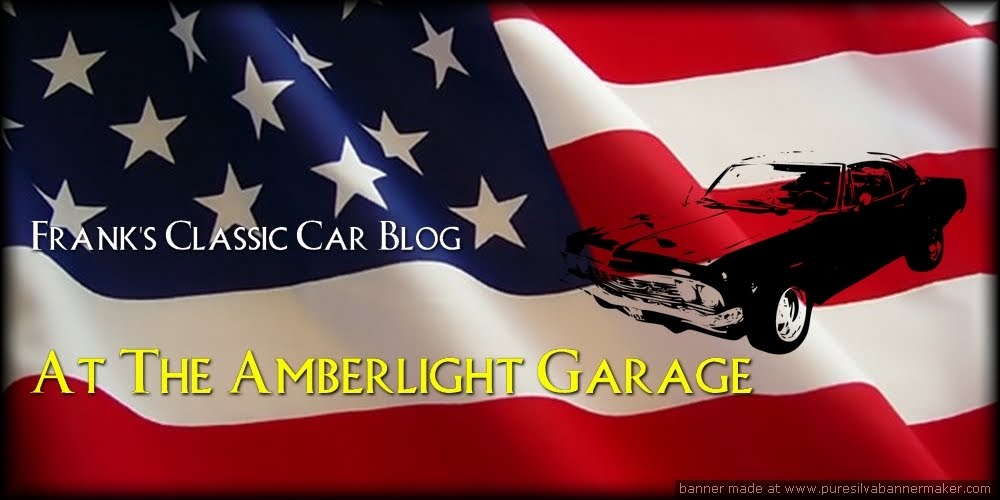If you're like me, you have probably seen classic car prices sky rocket over the past 5 years or more. I have watched in disbelief as the prices on a lot of my favorite cars continue to go skyward. When I was growing up they use to say "convertible" was a thousand dollar word. Heck, try
ten thousand now-a-days, no matter what the condition.
I can vividly remember buying my second car - a 1969 Chevelle Malibu - for $300 from a neighbor that lived down my street. When I finally got up the nerve to go ask my elderly neighbor if she wanted to sell it, she told me that the Mail Man had been asking her about it and she was thinking of selling it to him! I gave her puppy dog eyes and told her that I really needed a car to get to school. She told me he had offered $500 dollars and then asked what I would pay. I was honest, I told her all I had was $300 dollars but I had a part-time job and could make payments to her. To my suprise, she said she would take $300 dollars, as long as I promised to take good care of the car. Boy, would I ever! What can you get for $300 dollars you ask? How about an all original '69 Malibu with 28,000
original miles on it! It was Grandma tan, black interior, dog dish hub caps, 307 with a power glide. I remember it still had the original spark plug wires on it! This was my high school car. It saw many engines, including a wicked 396. I also converted it to a 4-speed. Ahh, the memories...
I must warn you, I have owned a bunch of cars. Just over 100 I believe. I could tell you a million stories about the ones that I should have kept. I think we all have at least one story like that. If only I had that car today...Does that phrase sound familiar? Some of my "good" ones include:
1967 Ford Mustang Fastback, 390, top loader, 9 inch locker, manual disc brakes.
1955 Chevy 210 2 door post, 396 w/ hooker conversion kit, 4-speed trans.
1957 Chevy Belair 2 door hardtop, 327 tri-power, 4-speed trans.
1969 Chevy Chevelle SS 396, 4-speed, 12 bolt posi.
1967 Pontiac Firebird 400, 4-speed, posi w/ factory traction bars, radio and heater delete - basically ordered from the factory stripped for racing.
1968 Pontiac GTO, 400, 4-speed, red w/ red interior.
1969 Pontiac Firebird Sprint, OHC 6 cyl HO w/ 4 bbl carb, 4-speed, posi.
1969 Pontiac Firebird convertible, 350 HO, auto, A/C, power disc brakes.
1970 Pontiac Trans Am, 396 engine swap, automatic, 12 bolt posi.
and many more...
I guess I should get to the subject of this story. We have all heard on the news lately about how the economy is going south, business is slow, spending is down, house prices are tanking, etc. Alas, there are some positives about the national economy taking a dump. One is that classic cars prices - like stocks - tend to go down, way down in some cases. I watch car prices. Call it a hobby or just a sick obsession, but I am checking prices at least 3 times a week. So now I'm watching the prices fall on many of the cars that I would love to have, with only one small problem - I don't have any money! That's right, no money, as in zero, nada, zilch, zippo, nothing. I think you get the idea. So how can I take advantage of all these killer deals that abound? You have to get creative, that's all. Let me tell you how...
You see, I had this gi-normus SUV that gulped down gallons of Opec's finest every day. It was my daily driver that use to be the family vehicle. (now you know how I rate in the family, I get the left overs) I guess it wasn't that bad. Take a look and you decide...
So I'm stuck driving this rolling brick and wondering to myself how am I going to get some money to take advantage of this depressed muscle car market. The funny thing was, I already knew the answer. I had done it before. So if I had done it before, history dictates that I should be able to do it again, right? What was
it you ask? The original way of getting what you want - trade for it. Yeah, trade, barter, swap, call it what you want, but it works. You see, I did it not to long ago by responding to an ad that I saw in
Auto Trader that said: "for sale or trade". My daily driver at the time was a 535i BMW that I barely fit into. The car was fast, got good mileage, looked sharp, but it just didn't fit me. Do you want to know what I did? I traded it straight across for a 1961 Ford F-100 Pickup.

This was my Beemer.....

and this is the truck I traded it for....
Before you go saying how I got ripped off, you have to know the details. I felt like I was in a coffin when I was in the BMW, and I don't know what the heck I was thinking when I bought it. Maybe it was the fact that it was a 5 speed stick, or had the M-5 six cylinder in it. The car hauled ass, but it just wasn't
me. For the peanut counters out there, the BMW booked for around $4500 and I ended up selling the Ford for $5800, so you do the math.
The first thing I do is start searching my favorite automotive web sites for folks who are interested in trading. Searching is kind of a loose term for me because I am always on the web anyways, watching prices and looking for deals that I can't afford. All I really did was modify my search parameters to find the ads with the keyword "trade" in it. I looked at a few duds before I found one that I wanted to trade for, like the 1967 Corvair Monza that I looked at. It had rust so bad in the cowl area that I swear the car was bowing between the front fenders and the doors. With todays gas prices it was kind of tough to find someone who actually wanted a gas-guzzling SUV, so my choices were kind of slim. I just knew there was someone out there. The Corvair guy would have traded for a Yugo as long as it didn't have any rust. I actually did find someone who was looking for a SUV. Do you want to know what I finally ended up trading for? I thought I would stick with something I already knew plenty about and had lots of spares. (Read: save money on parts) I managed to find a trade for a 1971 Oldsmobile Cutlass "S" 2-door hard top.
Here is the grandma fresh Oldsmo-bubble that I got

. Maybe the word "fresh" is being a little generous. Ok, a
lot generous. The best thing about it is that it has almost zero rust. The rear quarters are cherry, as is the trunk floor, floor pans, and most of the body. There are some signs of rust at the bottom of the front fenders, and a little bit on one side of the vinyl top, but that's about it. Compared to that Corvair I looked at, this thing is in conquers condition. It has a V-8, 2bbl carb, automatic, A/C, power steering, power disc brakes, and of all things a remote trunk release. Go figure. So this is my new project, my daily driver, my subject for this blog. As I work on it to bring it back to it's former glory, you will be able to follow along. Watch and learn by my mistakes as I plod along with various projects on this beast. Even if your into Buicks, Chevelles or GTOs, a lot of the repairs will be similiar because all of them are on GM's "A" body platform. Check back often to see what's going on in Franks Classic Car Garage.




 With the t-stat back in place, adjust it lightly until the choke plate just closes on a standard pencil.
With the t-stat back in place, adjust it lightly until the choke plate just closes on a standard pencil.











 It still wears it's original coat of factory paint. I think it's Marygold Yellow or something like that, but I call it piss yellow. My latest project is a brown 1971 Olds (see my "Tale of a modern car deal" post), so I refer to the cars as Number 1 and Number 2.
It still wears it's original coat of factory paint. I think it's Marygold Yellow or something like that, but I call it piss yellow. My latest project is a brown 1971 Olds (see my "Tale of a modern car deal" post), so I refer to the cars as Number 1 and Number 2. 


 and this is the truck I traded it for....
and this is the truck I traded it for....














